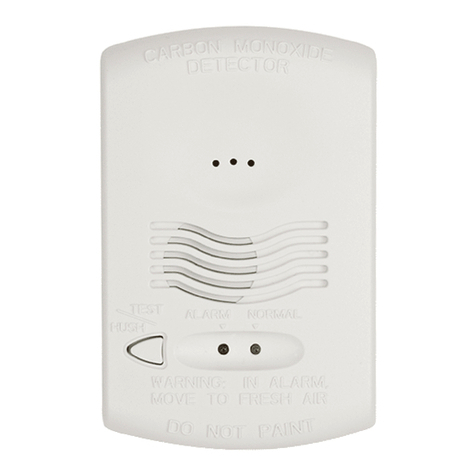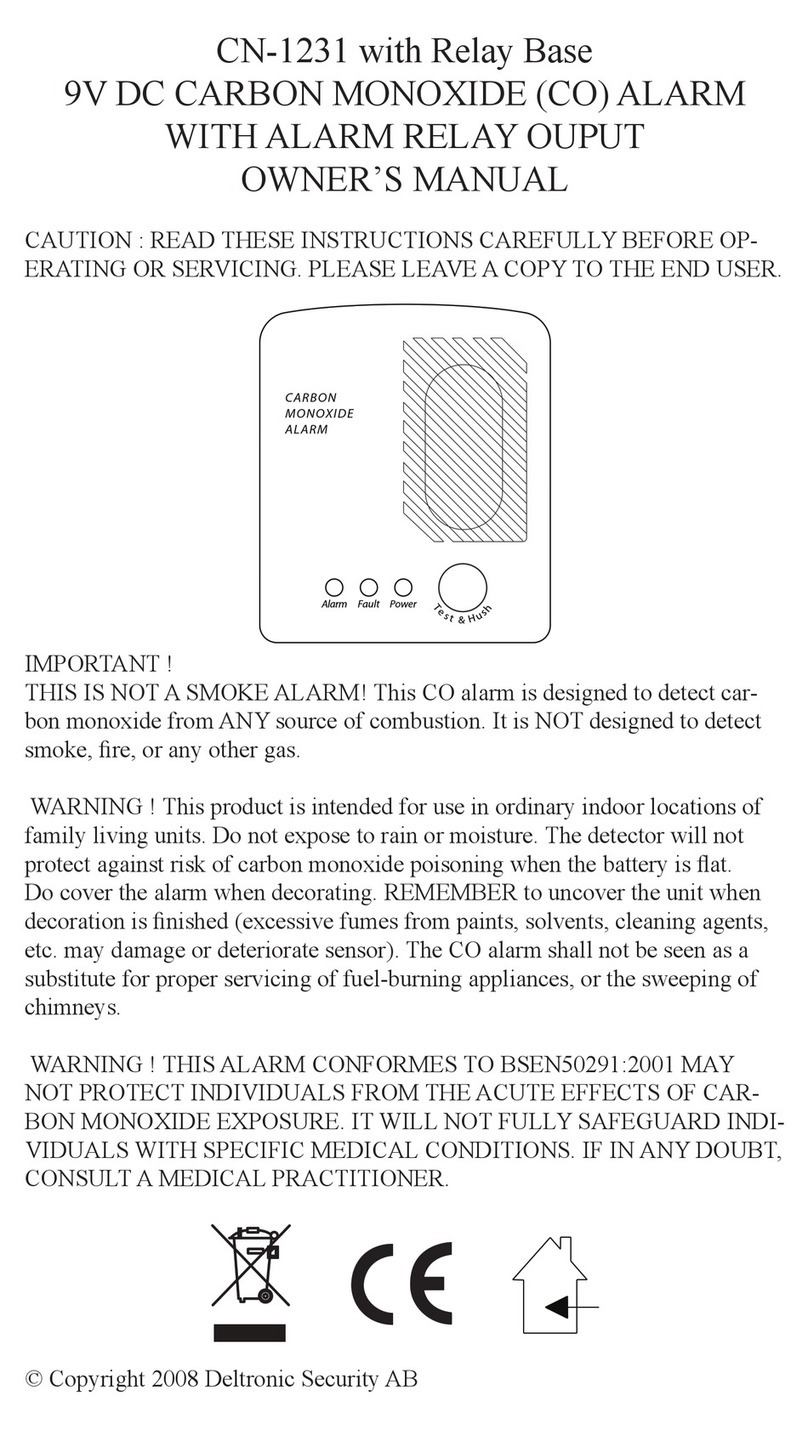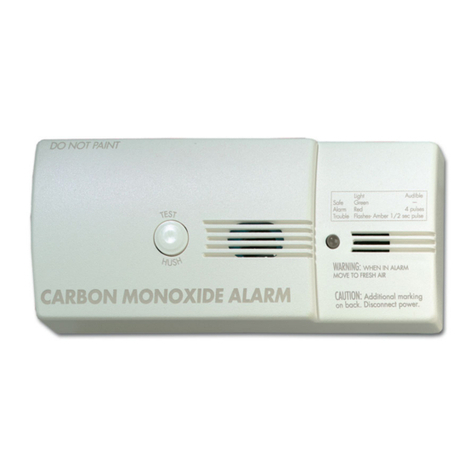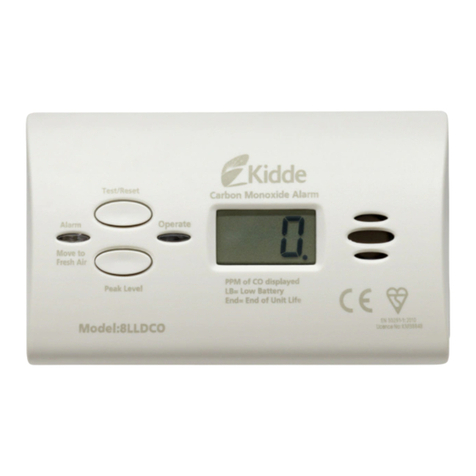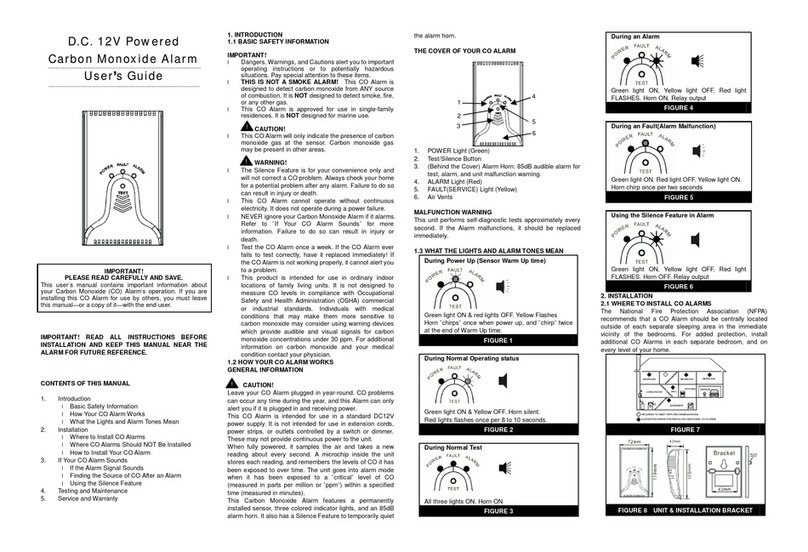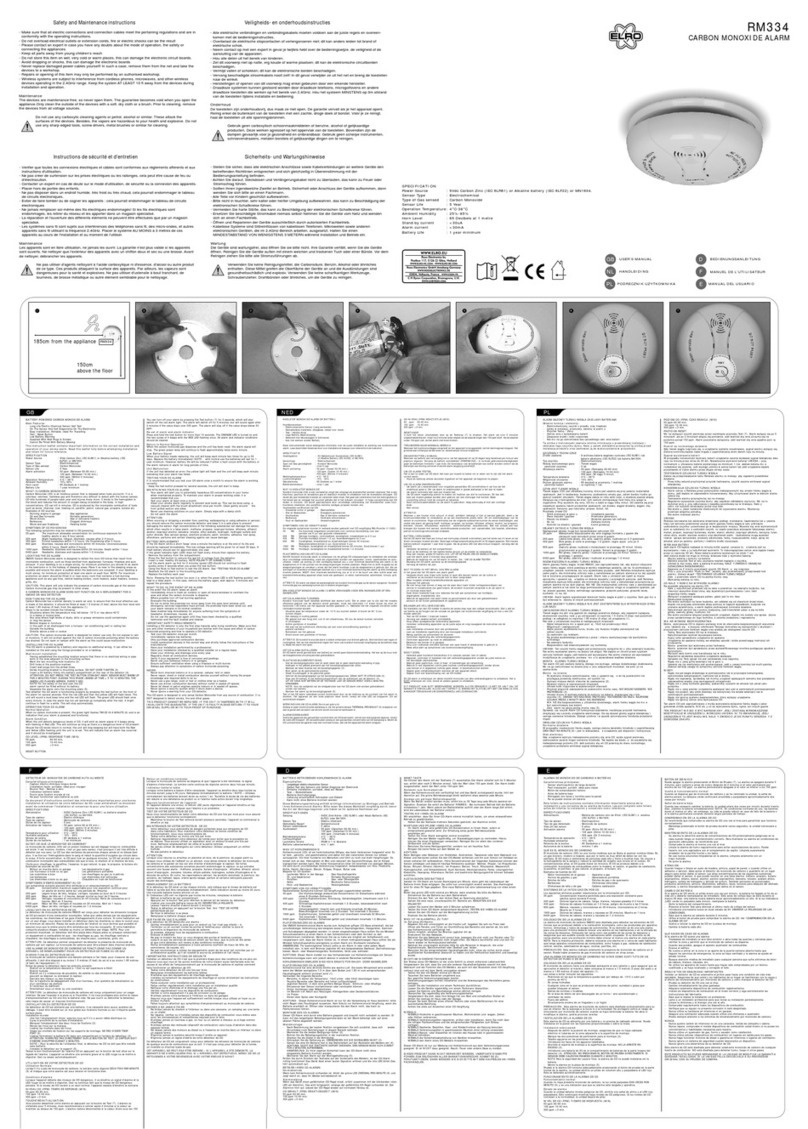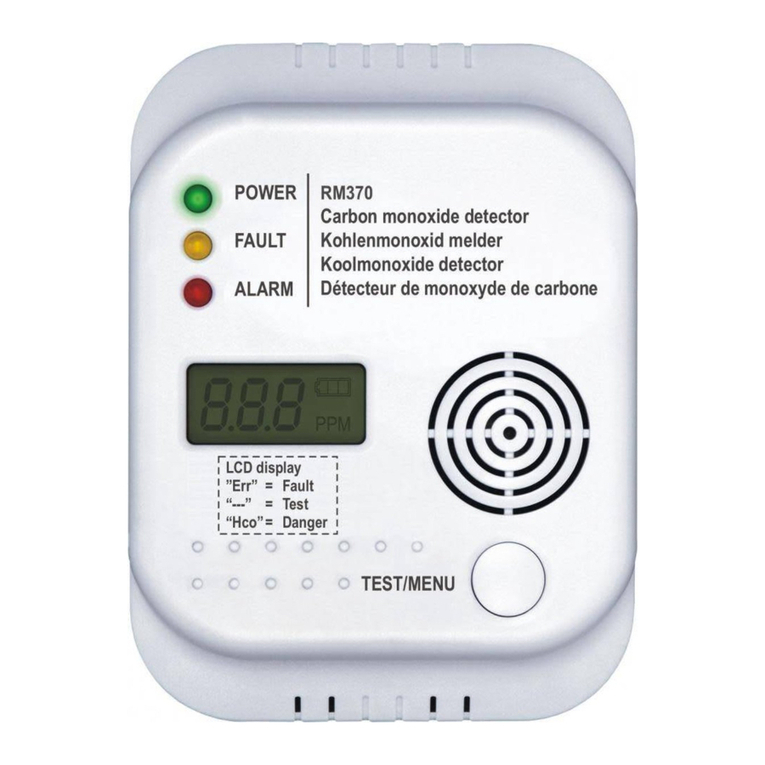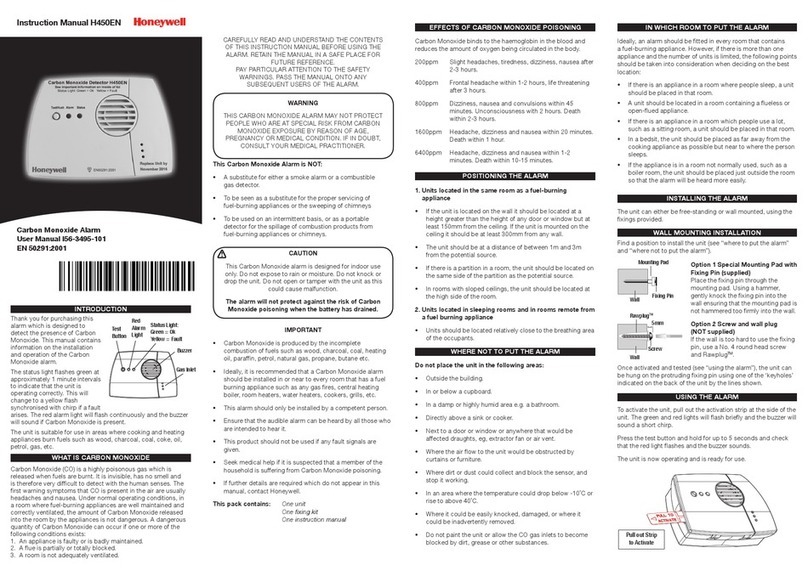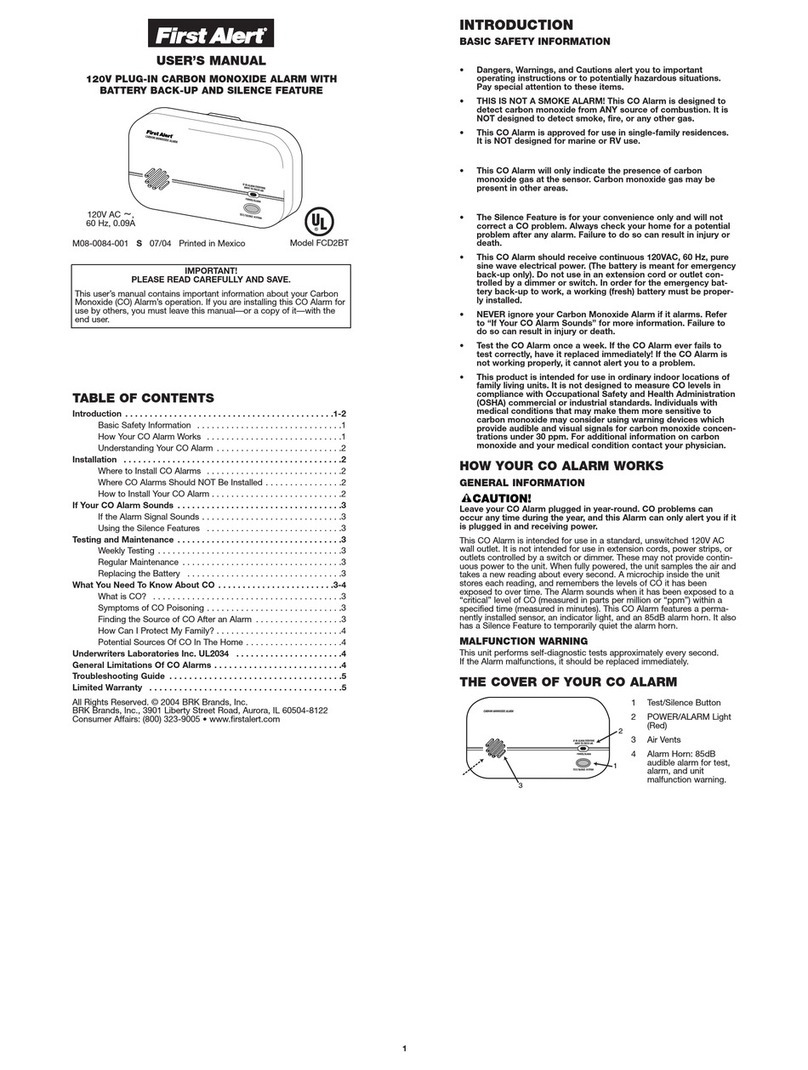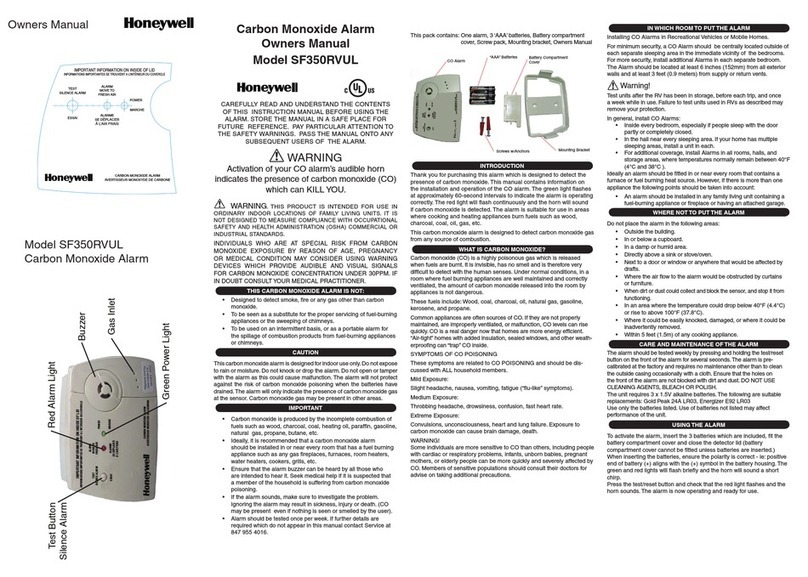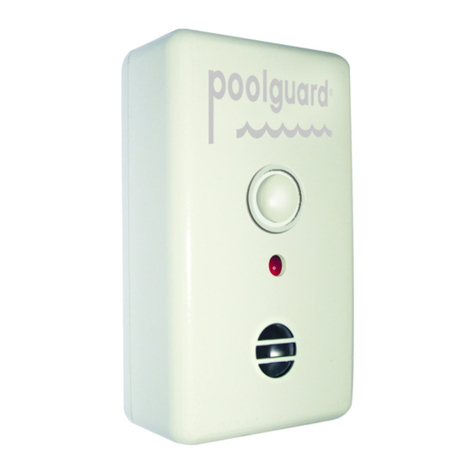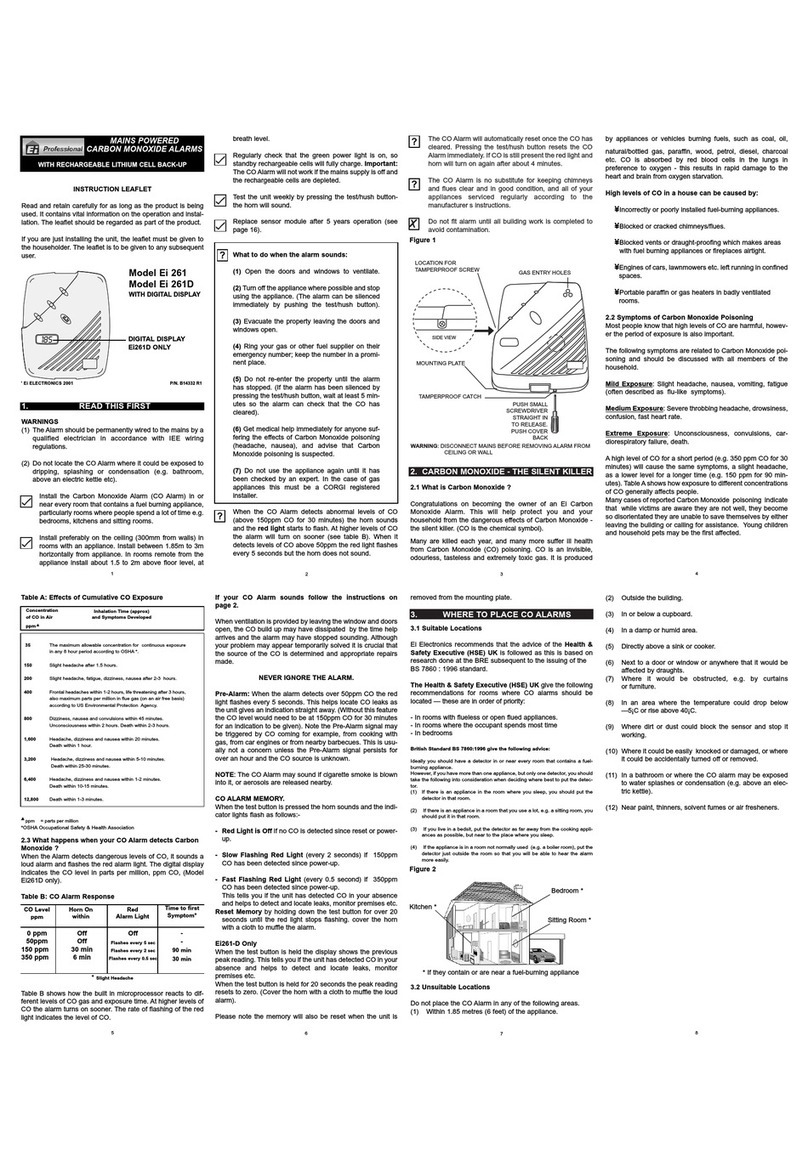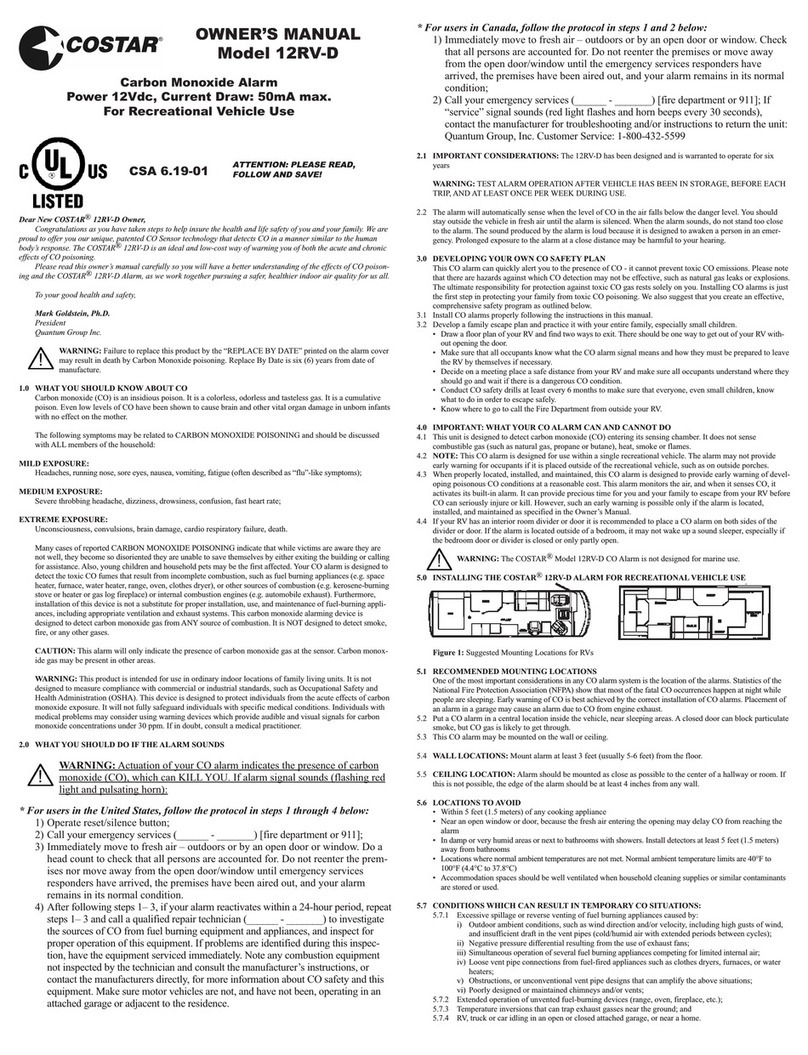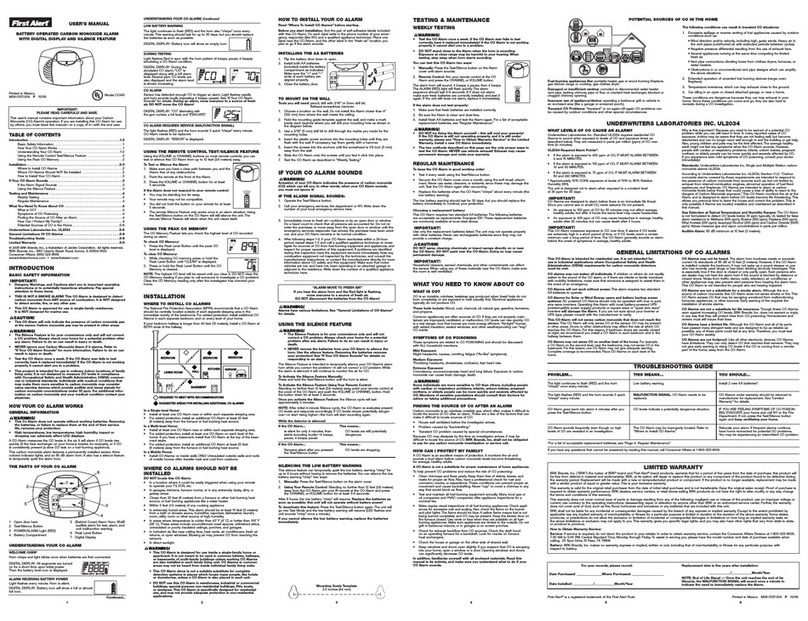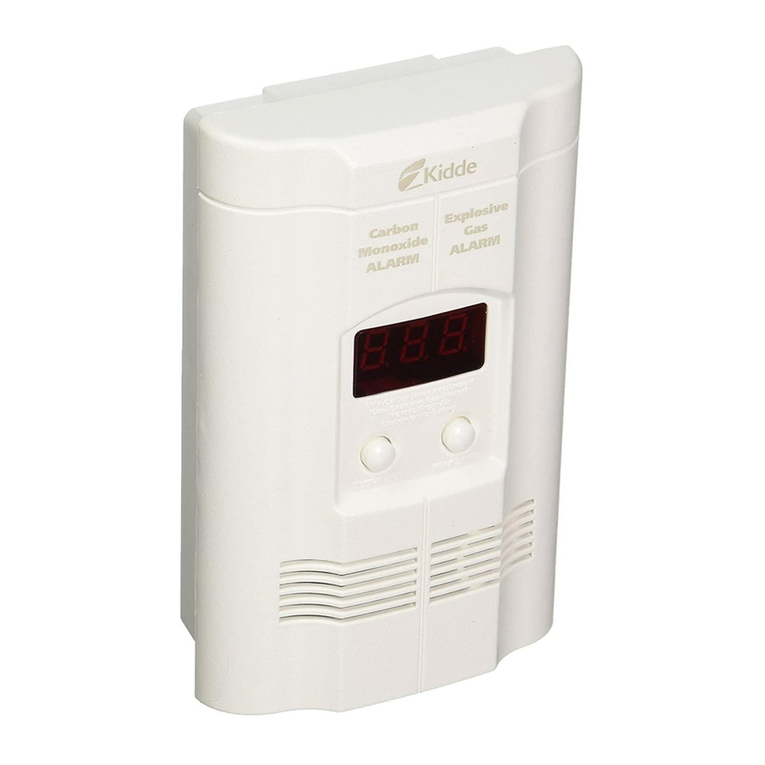
-9- -10- -11-
solvents, adhesives, hair sprays, aer shaves ,perfumes and
some cleaning agents.
WARNING! Your CO alarm will not be operaonal and will not
monitor for CO levels without baery.
WARNING! This apparatus is designed to protect individuals
from the acute effects of carbon monoxide exposure. It will not
fully safeguard individuals with specific medical condions. If in
doubt consult a medical praconer.
7. CARBON MONOXIDE (CO) OVERVIEW
7.1 Toxic effects
Carbon monoxide (CO) is a colourless, odourless, nonirritang
gas classified as a chemical asphyxiant and whose toxic acon is
a direct result of the hypoxia produced by a given exposure.
CO is rapidly absorbed through the lungs, diffuses across the
alveolar capillary membrane and is reversibly bound with
haemoglobin as carboxyhaemoglobin (COHb), however, a minute
amount is present in the plasma. The affinity of haemoglobin for
CO is over 200 mes its affinity for oxygen. This reduces the
oxygen carrying capacity of the blood, and has an effect on the
dissociaon of oxyhaemoglobin, which further reduces the
oxygen supply to the ssues. CO is chemically unchanged in the
body, and is eliminated in expired air. The eliminaon is
determined by the same factors that applied during absorpon.
The half-life while breathing room air is 2h - 6,5 h depending on
the inial COHb level. If the CO level in the inhaled air is
constant, the level of COHb in the blood will approach an
equilibrium (saturaon) state aer several hours. However, the
rate at which the equilibrium is reached depends on many
factors, e.g. lung venlaon rate (physical acvity) and alveolar
capillary transfer, cardiac parameters, blood haemoglobin
concentraon, barometric pressure, oxygen and carbon dioxide
concentraon in the inhaled air, but the two most important
factors in determining the COHb level are the CO concentraon
andthe duraon of exposure.
The effects of different saturaon blood COHb levels
on healthy adults
% COHb Effects
0.3 – 0.7 Normal range in non-smokers due to endogenous
CO producon
0.7 – 2.9 No proven physiological changes
2.9 – 4.5 Cardio-vascular changes in cardiac paents
4 – 6 Usual values observed in smokers, impairment in
psychomotor tests
7 – 10 Cardio-vascular changes in non-cardiac paents
(increased cardiac output and coronary blood flow)
10 – 20 Slight headache, weakness, potenal burden
on foetus
20 – 30 Severe headache, nausea, impairment in limb
movements
30 – 40 Severe headache, irritability, confusion, impairment
in visual acuity, nausea, muscular weakness,
dizziness
40 – 50 Convulsions and unconsciousness
60 – 70 Coma, collapse, death
Source: U.S. Environmental Protecon Agency 1984
The relaonship between the CO concentraon and the duraon
of exposure can be calculated for a given %COHb, by
parameterising the above factors.
7.2 Chronic effects on high risk groups
Individuals with coronary artery disease exposed to lowlevels of
CO show reduced ability to exercise and the me of onset of
exercise-induced angina pectoris in such paents exposed to low
levels of CO is reduced. Carbon monoxide readily crosses the
placental barrier and may endanger the normal development of
the foetus. A number of high-risk groups are parcularly
sensive to the effects of CO because of various organ
impairments or specific changes, mainly:
a) those whose oxygen carrying capacity is decreased due to
anaemia or other haemoglobin disorders;
b) those with increased oxygen needs such as those
encountered in fever, hyperthyroidism or pregnancy;
c) those with systemic hypoxia due to respiratory insufficiency;
d) those with heart disease and any vascular insufficiency.
WHO guidance states that in order to protect non-smoking,
middle-aged and elderly populaon groups with documented or
latent coronary artery disease from acute ischaemic heart
aacks, and to protect the foetuses of non-smoking pregnant
women from untoward hypoxic effects, a COHb level of 2.5%
should not be exceeded. The following WHO guideline values
and periods of me-weighted average exposures have been
determined in such a way that the COHb level of 2.5% is not
exceeded, even when a normal subject engages in light or
moderate exercise:
100 mg/m³ (90 ppm) for 15 min.
060 mg/m³ (50 ppm) for 30 min.
030 mg/m³ (25 ppm) for 1 h.
010 mg/m³ (10 ppm) for 8 h.
7.3 Normal COHb levels
Under normal condions, humans typically have low levels of
COHb of between 0.3% and 0.7% present within the body. These
levels are considered neither beneficial nor harmful.
7.4 Tobacco smoking
Tobacco smokers are exposed to significant concentraons of CO.
In cigaree smokers, the COHb concentraon varies between
5%-9%, while heavy cigar smokers may exceed 10%.
WARNING! Exposure to high levels of carbon monoxide can be
fatal or cause permanent damage and disabilies.
WARNING! The device may not prevent the chronic effects of
carbon monoxide exposure, and that the device will not fully
safeguard individuals at special risk.
8. SPECIFICATION
Model : CBFC28
Product standards : EN 50291-1:2018
Type of apparatus : Type B
Power Supply : 3V (2pcs AA alkaline baery)
Recommend baery type : GP GN15A or ENERGIZER E91
(The normal service life is 3years)
Sensor Type : Electrochemical
Product life : 10 years aer manufacture
Standby Current : <20μA (average)
Alarm Current : <50mA (average)
Operaon Ambient
Condion : -10 ~ +45°C, 25 ~ 95%RH
Storage/Transport
Ambient Condion : -20 ~ +50°C, 10 ~95%RH
Alarm sound : ≥85DB at 3m
Low Baery warning silence : about 9 hours
Installaon Locaon : wall
Detecon range : Max. 40 m2 within a room.
Size : 120*80*37 ± 1mm
Weight : 102 ± 5g (net)
NOTE: This CO alarm is designed to detect carbon monoxide gas
from any source of combuson. It is not designed to detect any
other gas.
